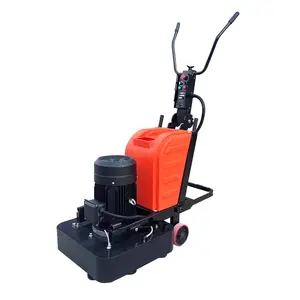Top 5 Common Floor Grinding Mistakes and How to Avoid Them
floor grinding

Floor grinding is an important operation for obtaining a smooth, polished surface on various types of flooring. However, a number of typical errors might jeopardize the quality of the final result. Here's how to avoid these pitfalls and have a successful floor grinding project.
1. Improper Surface Preparation
Skipping or insufficiently prepping the surface before grinding might result in poor adherence and inconsistent outcomes. This includes not cleaning the floor thoroughly or failing to repair cracks and gaps.
How to Avoid It: Ensure thorough cleaning of the surface to remove any dust, dirt, or debris. Repair any cracks or holes before starting the grinding process. For best results, use a surface primer or bonding agent as recommended for the type of flooring you're working on.
2. Using Incorrect Grinding Discs
Using the incorrect type or grit of grinding pads or discs can result in ineffective grinding, uneven surfaces, and undue wear on the equipment.
How to Avoid It: Choose the right grinding pads or discs based on the type of floor material (concrete, marble, etc.) and the desired finish. Follow manufacturer guidelines for grit levels and pad types to match your specific project requirements. Consult with professionals or product specifications to ensure proper selection.
3. Inconsistent Grinding Speed and Technique
Inconsistent grinding rates and procedures can lead to uneven surfaces, apparent scratches, and poor smoothing.
How to Avoid It: Maintain a consistent grinding speed and technique throughout the process. Use overlapping passes to ensure even coverage. Familiarize yourself with the equipment and practice on a small area if needed to master the correct technique.
4. Neglecting Safety Precautions
Failure to employ correct safety equipment or to follow safety rules can result in accidents, injuries, or health problems due to dust and noise exposure.
How to Avoid It: Always wear appropriate personal protective equipment (PPE), including safety goggles, ear protection, and dust masks. Ensure proper ventilation in the work area and follow all safety guidelines provided by the equipment manufacturer.
5. Overlooking Proper Maintenance and Cleaning of Equipment
Neglecting to maintain and clean the grinding equipment might result in lower efficiency, poor results, and early failure.
How to Avoid It: Cleaning and inspecting your grinding equipment on a regular basis will help to remove dust, debris, and residue. Follow the manufacturer's maintenance schedule and recommendations to maintain peak performance and extend the life of your equipment.
Knowing these typical floor grinding mistakes and taking proactive efforts to avoid them can help you achieve a high-quality finish and assure the success of your flooring job. Proper preparation, proper equipment use, consistent practices, safety precautions, and regular maintenance are critical for avoiding mistakes and producing professional outcomes.

 euroblastme
euroblastme 










